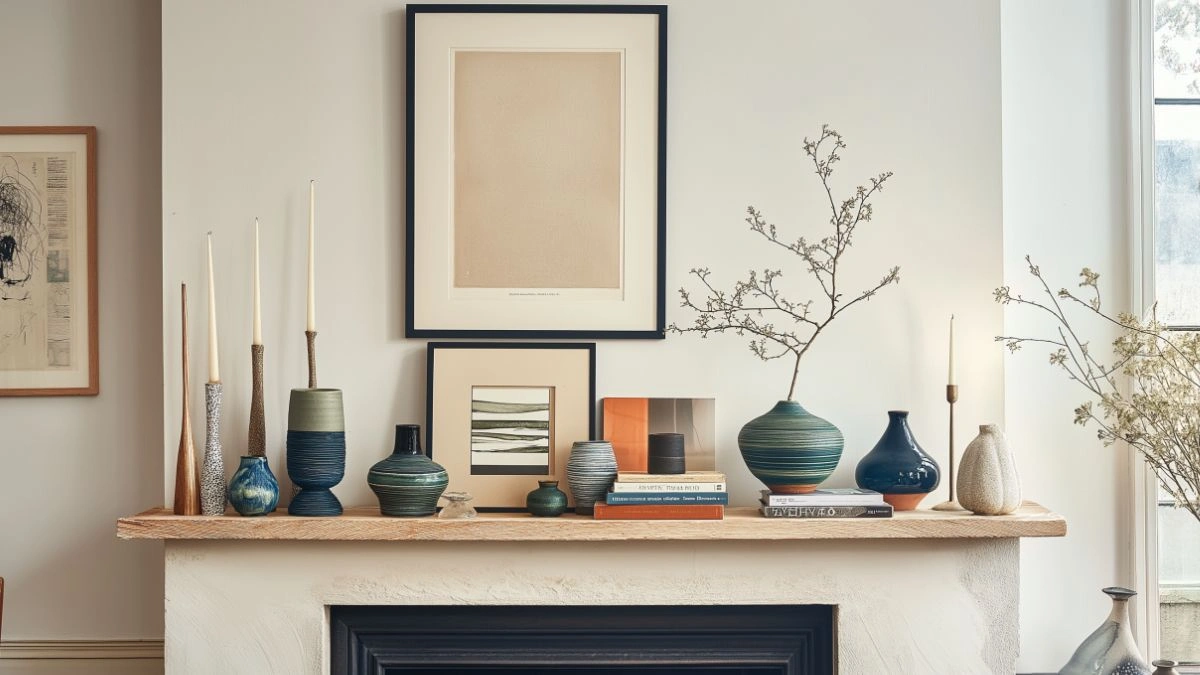How to Style Your Fireplace Mantel Like a Pro
Table of Contents
The fireplace mantel is more than just a shelf above your fire—it’s the visual anchor of your living room. Whether your fireplace is traditional, modern, rustic, or minimal, the mantel acts as a built-in stage for expressing personal style. Yet, many homeowners struggle with how to style it effectively without making it feel cluttered or outdated.
According to interior design trends, the mantel often becomes a focal point whether or not the fireplace is active. It naturally draws the eye and influences the tone of the entire space. A well-styled mantel can breathe life into a room, reflect the changing seasons, and highlight your home’s personality.
But achieving that “styled by a pro” look isn’t about expensive decor or rigid rules. It’s about thoughtful layering, balance, and a few time-tested principles that you can easily adapt to your home. In this guide, we’ll walk through professional styling tips for your fireplace mantel—covering proportion, color, symmetry, and more—so you can transform your living room into a magazine-worthy retreat.
Start with a Strong Anchor Piece
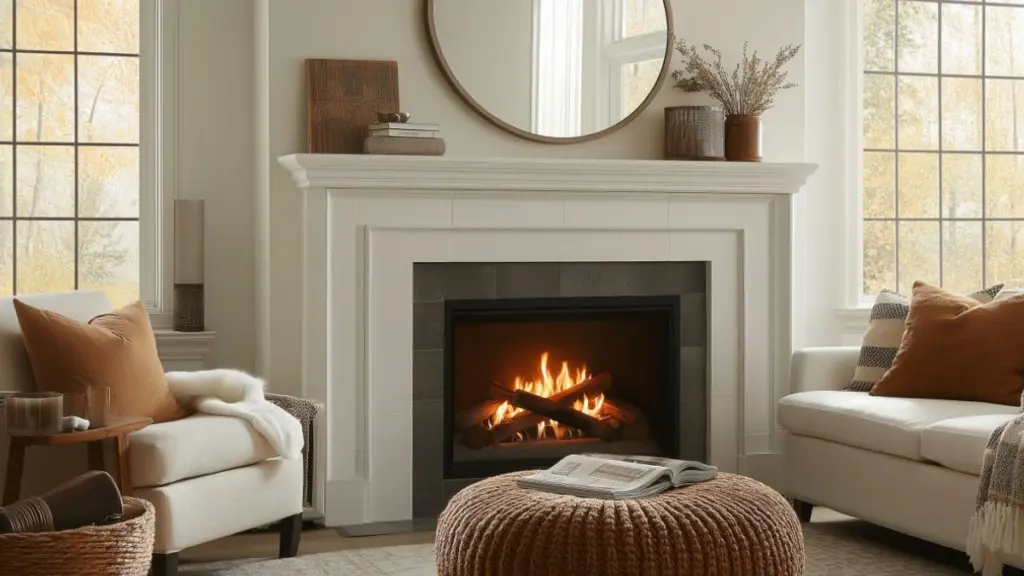
Every beautifully styled mantel starts with a visual anchor. This could be a mirror, an art print, a framed photograph, or even a sculptural object. The anchor sets the tone and scale for everything else, so choosing the right piece is key.
The ideal anchor should be large enough to stand out but not so oversized that it dominates the entire mantel. A good rule of thumb is to choose a piece that’s about two-thirds to three-quarters the length of the mantel shelf.
Anchor Piece Guidelines
| Anchor Type | Style Match | Ideal Size/Proportion |
|---|---|---|
| Framed Art | Modern, classic | ⅔ to ¾ mantel width |
| Round Mirror | Contemporary, transitional | Slightly off-center adds interest |
| Canvas Print | Boho, minimalist | Layer with smaller pieces for depth |
| Statement Object | Eclectic, sculptural | Must be stable and not too tall |
Your anchor doesn’t have to be centered perfectly. Off-center arrangements create modern movement and allow space for asymmetrical styling.
Layer with Height and Texture
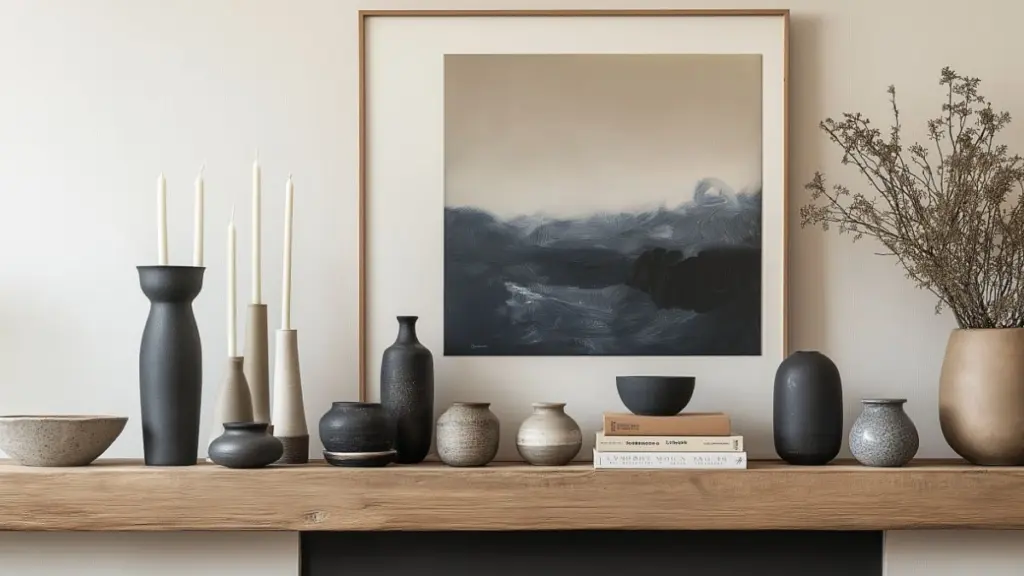
Once your anchor is in place, it’s time to build layers around it. The secret to a professional-looking mantel is contrast—not everything should be the same size or shape. Mixing heights and textures creates depth and dimension that’s visually interesting.
Start by placing taller items like candlesticks, vases, or small plants at either end of the mantel. Fill in the middle with layered frames, stacked books, or ceramic sculptures. Try overlapping a few pieces rather than lining them up, which can feel stiff.
Mantel Layering Techniques
| Element | Adds What? | Styling Tip |
|---|---|---|
| Tall candlesticks | Height and structure | Use in groups of two or three |
| Textured vases | Dimension and interest | Vary materials (ceramic, glass, wood) |
| Framed photos | Personal touch | Overlap for a relaxed look |
| Books | Horizontal balance | Use as risers for smaller objects |
Mixing glossy and matte finishes or rough and smooth textures enhances visual balance. Just be sure to avoid crowding—leave some breathing room between pieces.
Use Symmetry or Asymmetry to Create Balance
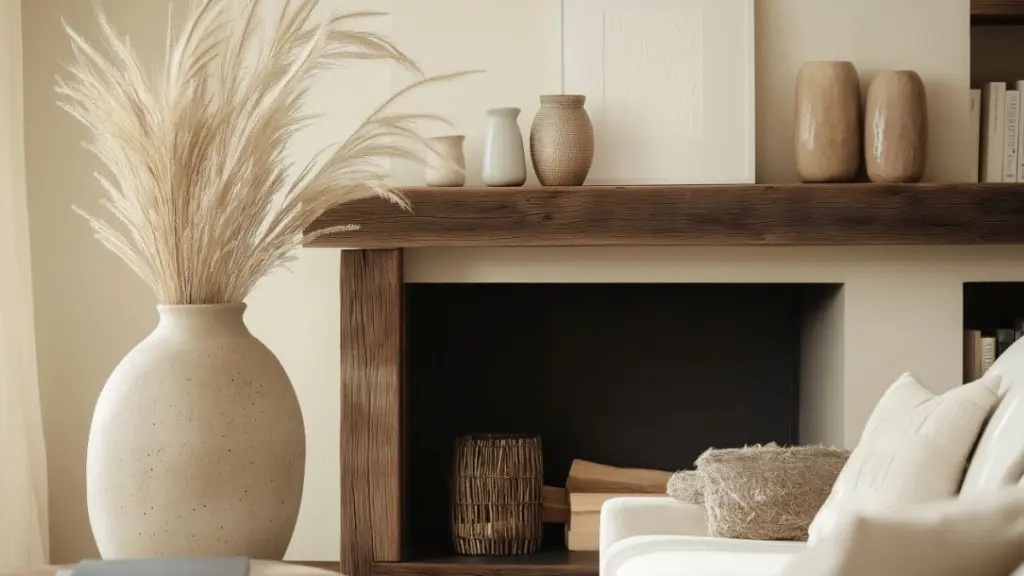
When styling a mantel, balance doesn’t have to mean symmetry. While symmetrical arrangements (where both sides mirror each other) feel formal and polished, asymmetry creates a relaxed and dynamic look.
The key to both is visual weight. If you’re going for symmetry, use identical or similarly sized items on each side. For asymmetry, balance a large object on one side with a group of smaller items on the other.
Comparing Symmetry and Asymmetry
| Style Approach | Pros | Best For |
|---|---|---|
| Symmetrical | Classic, formal, calming | Traditional and transitional spaces |
| Asymmetrical | Modern, creative, organic | Boho, eclectic, or minimalist styles |
| Hybrid (loose balance) | Soft structure with flexibility | Transitional or contemporary setups |
Experiment and trust your eye. If something feels “off,” adjust the weight by changing item size, color, or placement.
Incorporate Seasonal or Rotating Accents
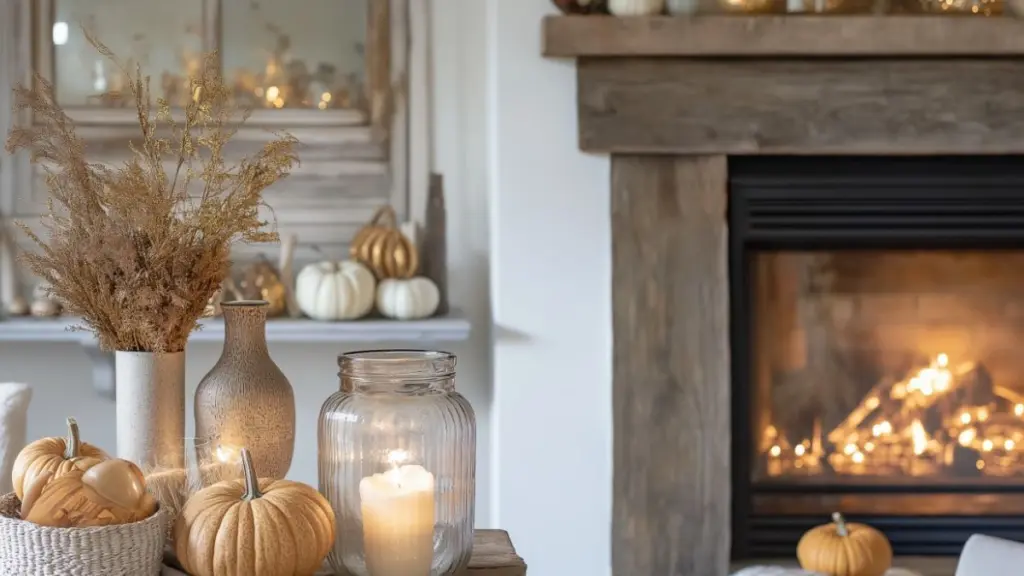
One way to keep your fireplace mantel fresh year-round is by incorporating seasonal or rotating decorative accents. Think small, switchable pieces that reflect the time of year or upcoming holidays without requiring a full overhaul.
In spring, add fresh greenery or floral prints. In autumn, layer in small pumpkins or warm-toned ceramics. The key is to complement your core decor without overwhelming it.
Seasonal Decor Ideas by Season
| Season | Accent Ideas | Base Colors to Use |
|---|---|---|
| Spring | Tulips, bird figurines, light garlands | Pastels, soft green, white |
| Summer | Driftwood, coastal art, bright florals | Blue, sandy beige, coral |
| Autumn | Mini pumpkins, gold frames, dried leaves | Burnt orange, copper, rust |
| Winter | Pine garland, fairy lights, candles | Deep greens, white, silver |
Use a neutral base so your seasonal updates blend seamlessly.
Create Depth with Art and Mirrors
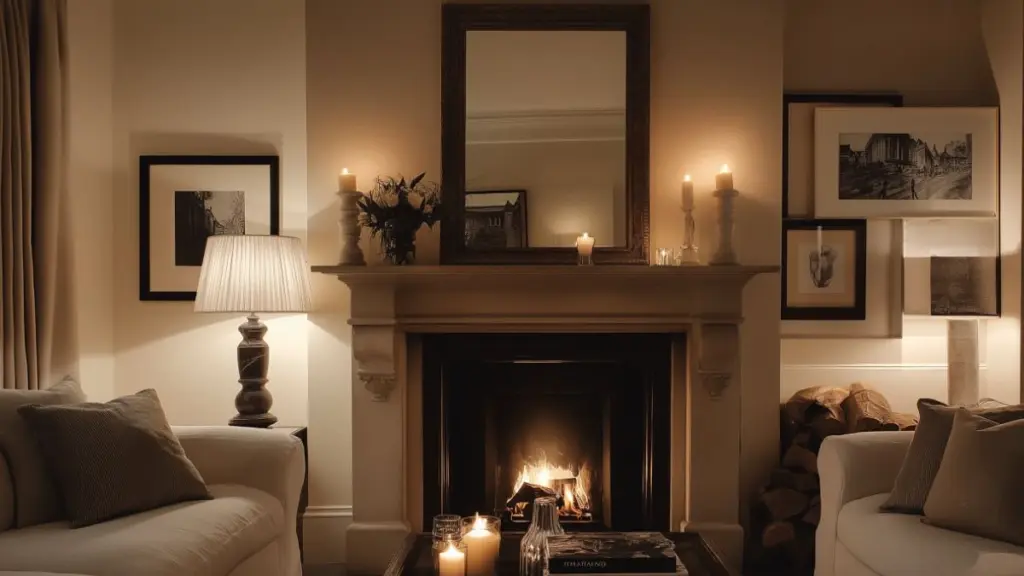
Mirrors and artwork are mantel staples for a reason—they provide instant impact, reflect light, and create a feeling of space. But how you use them can dramatically change your mantel’s aesthetic.
For example, a mirror can be centered and flanked with smaller pieces, or it can be leaned against the wall for a casual vibe. Framed artwork can be layered in groups or hung above the mantel for a vertical lift.
When combining multiple frames, vary the size and orientation. A combination of landscape and portrait layouts helps avoid repetition.
Art and Mirror Styling Ideas
| Styling Choice | Works Best With | Visual Impact |
|---|---|---|
| Centered round mirror | Minimalist or modern styles | Creates symmetry and brightness |
| Layered framed prints | Eclectic, vintage, transitional | Adds dimension and personality |
| Oversized canvas art | Bold, contemporary spaces | Anchor piece with strong statement |
| Leaning gallery wall | Casual, collected aesthetic | Dynamic and easy to change |
Don’t be afraid to break the “hang it” rule—leaning large frames or mirrors directly on the mantel creates a relaxed, editorial look.
Add Natural and Organic Elements
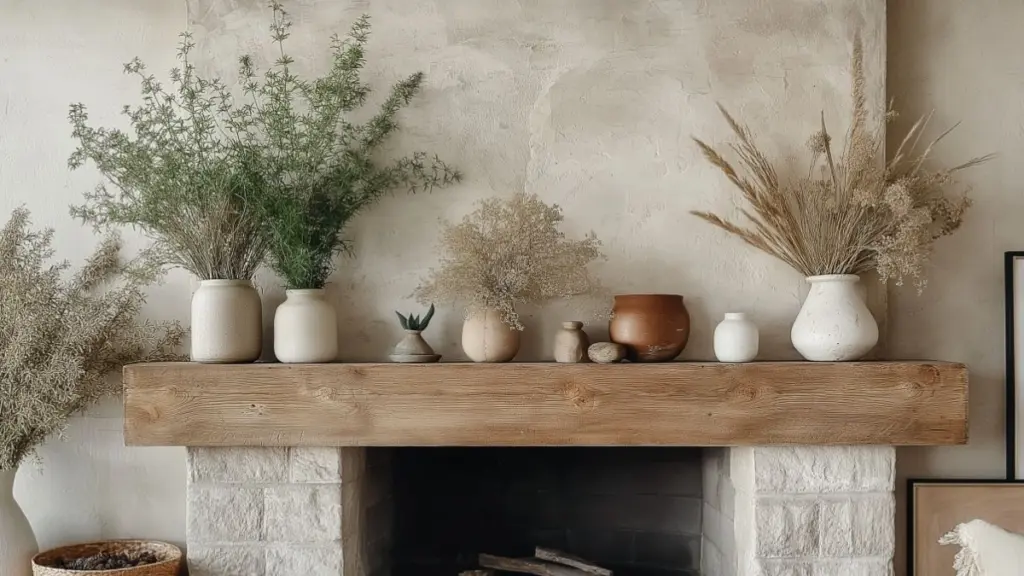
Bringing natural materials into your mantel styling is a powerful way to soften the space and ground your design. From small branches to potted plants, these elements add warmth, texture, and a connection to nature.
Fresh flowers add color and movement, while dried botanicals and preserved moss create a lasting organic touch. Even wood sculptures or stone pieces can offer subtle nods to nature without overwhelming the space.
Natural Element Integration Guide
| Item Type | Natural Vibe It Adds | Placement Idea |
|---|---|---|
| Potted greenery | Fresh and lively | Use on either end for balance |
| Dried florals | Rustic and vintage | Layer with books or candle holders |
| Wood or stone decor | Grounded and earthy | Mix with metallics for contrast |
| Organic textures | Softness and variation | Consider linen or woven baskets |
Keep proportions in mind—plants shouldn’t block your anchor piece or overwhelm the layout.
Keep It Personal Yet Polished
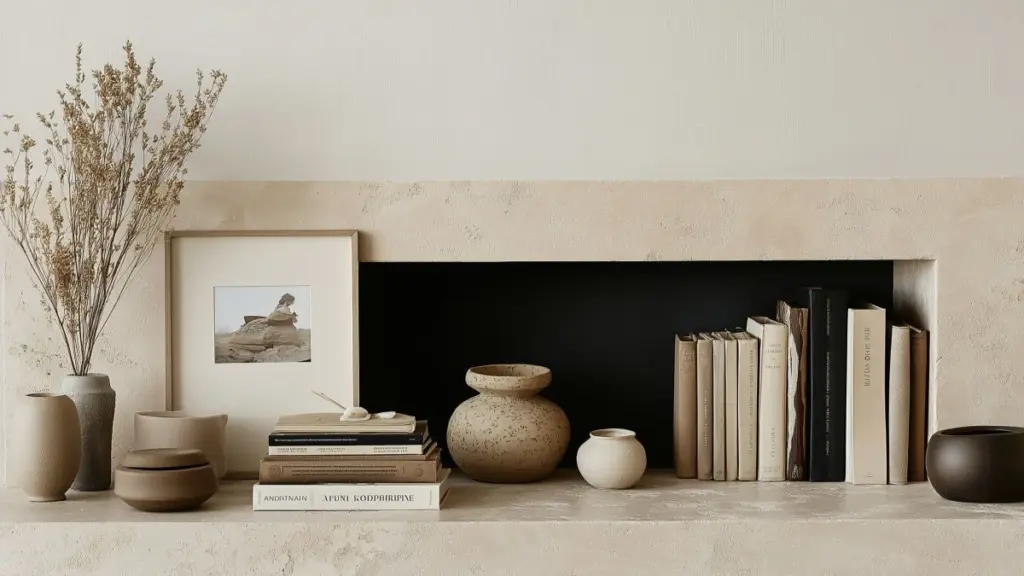
The best-styled mantels reflect the personality of the people who live there. Incorporating meaningful items—like heirloom vases, handmade pottery, or small framed photos—adds soul to the space. But keep it curated. Aim for items that also meet the design brief in terms of color, size, and proportion.
Too many sentimental items can clutter the look. Instead, treat your mantel like a gallery—swap items seasonally, and don’t be afraid to edit.
Personal Touch Ideas That Stay Chic
| Personal Item | Why It Works | Where to Place |
|---|---|---|
| Family photo frame | Adds warmth and familiarity | Layer with books for depth |
| Travel souvenirs | Unique and conversation-starting | Place near anchor or focal point |
| Handmade pottery | Adds organic, artisanal texture | Use as riser for other decor |
| Favorite book | Expresses identity and taste | Stack horizontally for height |
Let your personality shine—but with purpose.
Conclusion
Styling your fireplace mantel like a pro doesn’t mean filling every inch with trendy decor—it means understanding proportion, embracing balance, and curating a space that feels layered and lived-in. Whether you lean toward symmetrical styling or prefer organic asymmetry, the mantel should reflect your aesthetic and enhance the warmth of your living room.
By starting with a strong anchor, layering with intention, and adjusting with the seasons, you’ll create a mantel that’s both beautiful and functional. Remember: simplicity is powerful, and style evolves—so allow your mantel to change with your home and lifestyle.

